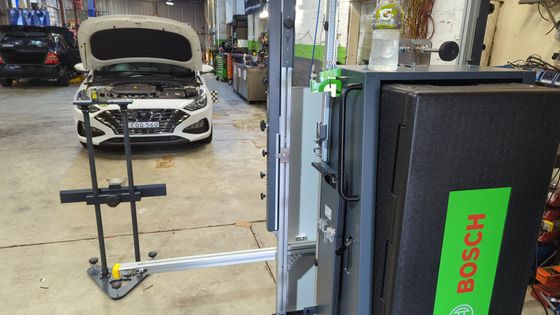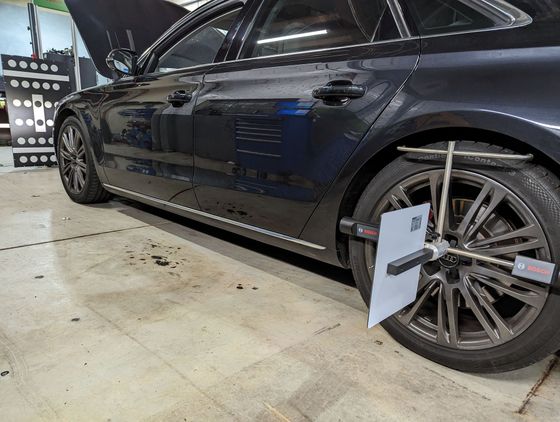
Adas Ultrasonic Calibration

ADAS ultrasonic calibration and repair is the process of adjusting and verifying the accuracy and functionality of the ultrasonic sensors used in advanced driver assistance systems (ADAS). Ultrasonic sensors are an essential part of ADAS technology and are used in features such as parking assistance, blind-spot detection, and collision avoidance.
During the calibration process, the ultrasonic sensor's range and sensitivity are verified and adjusted to ensure that they function correctly. This is typically done using specialized equipment that can simulate driving conditions and allow technicians to verify the ultrasonic sensor's performance.
In addition to calibration, ADAS ultrasonic sensors may also require repair in the case of damage or malfunction. Repairs may involve replacing damaged sensors or repairing wiring or other components that may affect sensor performance.
ADAS ultrasonic calibration and repair are crucial because even small misalignments or inaccuracies in the sensor's function can lead to incorrect data, false alarms, or even failure to detect potential hazards. Proper calibration and repair help to ensure that the ADAS technology performs as intended, providing accurate and reliable data to improve driver safety on the road.
Adas Camera Calibration

ADAS camera calibration is the process of adjusting and verifying the accuracy and functionality of the camera sensors used in advanced driver assistance systems (ADAS). Camera sensors are an essential part of ADAS technology and are used in features such as lane departure warning, adaptive cruise control, and pedestrian detection.
During the calibration process, the camera sensor's alignment, focus, and field of view are verified and adjusted to ensure that they function correctly. This is typically done using specialized equipment that can simulate driving conditions and allow technicians to verify the camera sensor's performance.
ADAS camera calibration is crucial because even small misalignments or inaccuracies in the camera sensor's function can lead to incorrect data, false alarms, or even failure to detect potential hazards. Proper calibration helps to ensure that the ADAS technology performs as intended, providing accurate and reliable data to improve driver safety on the road.
Radar Calibration

ADAS radar calibration is the process of adjusting and verifying the accuracy and functionality of the radar sensors used in advanced driver assistance systems (ADAS). Radar sensors are an essential part of ADAS technology and are used in features such as blind-spot detection, lane change assistance, and automatic emergency braking.
During the calibration process, the radar sensor's alignment, range, and angle are verified and adjusted to ensure that they function correctly. This is typically done using specialized equipment that can simulate driving conditions and allow technicians to verify the radar sensor's performance.
ADAS radar calibration is crucial because even small misalignments or inaccuracies in the radar sensor's function can lead to incorrect data, false alarms, or even failure to detect potential hazards. Proper calibration helps to ensure that the ADAS technology performs as intended, providing accurate and reliable data to improve driver safety on the road.
Call us: 0478727071
Address: 1/126 Bombay st, Lidcombe, NSW